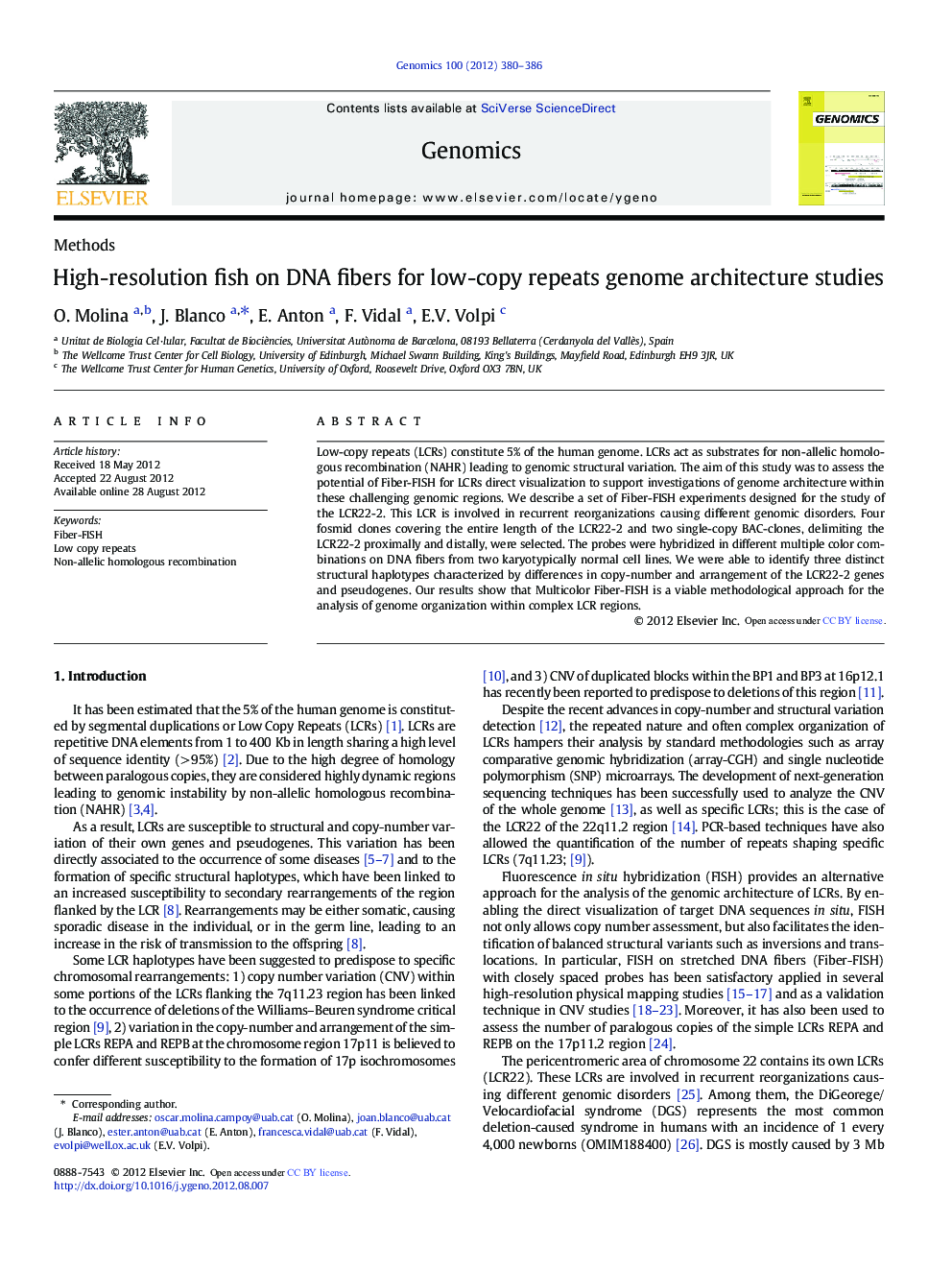| Article ID | Journal | Published Year | Pages | File Type |
|---|---|---|---|---|
| 5907955 | Genomics | 2012 | 7 Pages |
Low-copy repeats (LCRs) constitute 5% of the human genome. LCRs act as substrates for non-allelic homologous recombination (NAHR) leading to genomic structural variation. The aim of this study was to assess the potential of Fiber-FISH for LCRs direct visualization to support investigations of genome architecture within these challenging genomic regions. We describe a set of Fiber-FISH experiments designed for the study of the LCR22-2. This LCR is involved in recurrent reorganizations causing different genomic disorders. Four fosmid clones covering the entire length of the LCR22-2 and two single-copy BAC-clones, delimiting the LCR22-2 proximally and distally, were selected. The probes were hybridized in different multiple color combinations on DNA fibers from two karyotypically normal cell lines. We were able to identify three distinct structural haplotypes characterized by differences in copy-number and arrangement of the LCR22-2 genes and pseudogenes. Our results show that Multicolor Fiber-FISH is a viable methodological approach for the analysis of genome organization within complex LCR regions.
⺠We describe a Fiber-FISH experiment to analyze the LCR22-2 genomic organization. ⺠Three different haplotypes were identified in two cell lines. ⺠Fiber-FISH enables the analysis of the genome architecture of complex LCRs.
